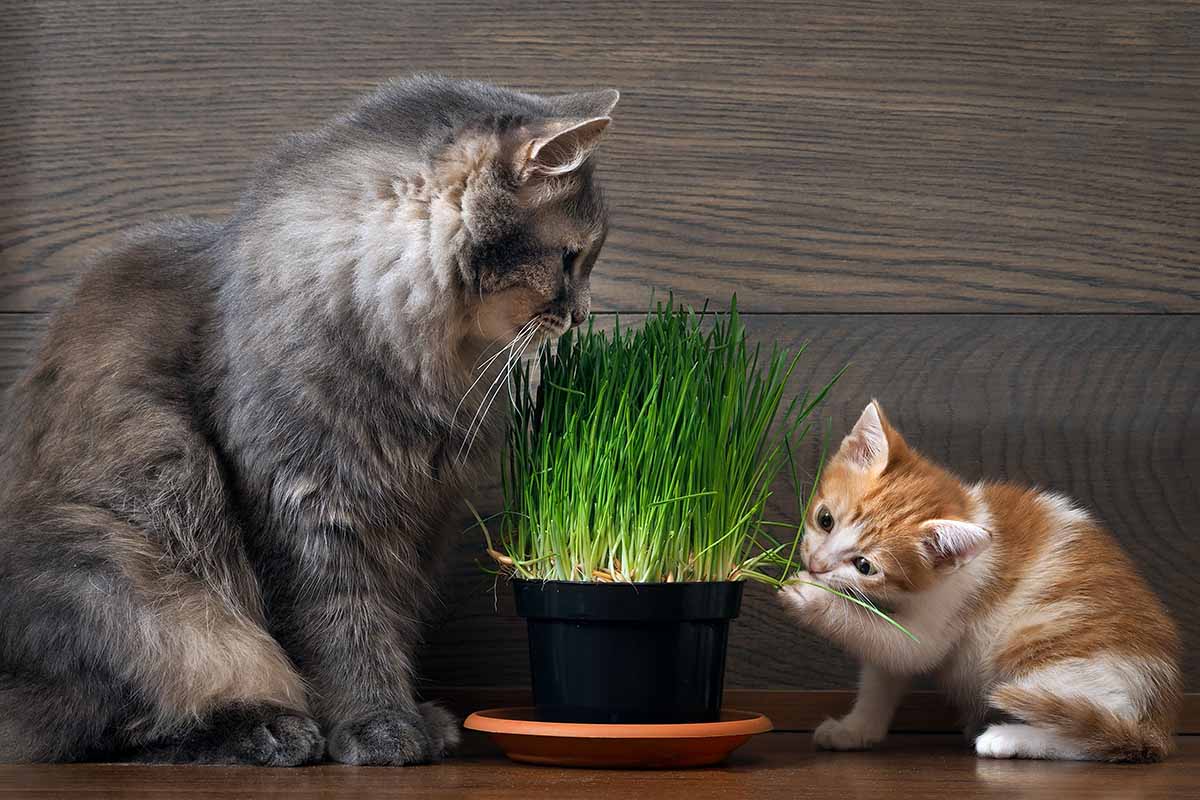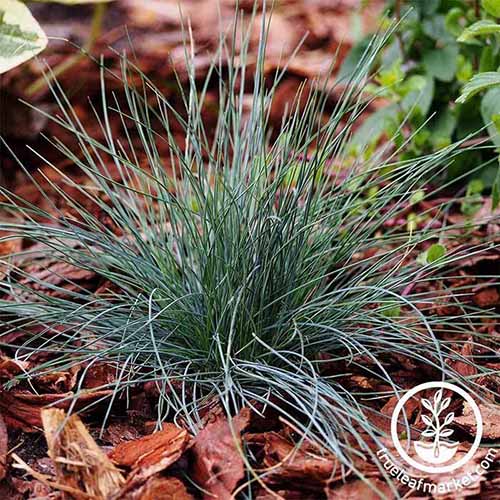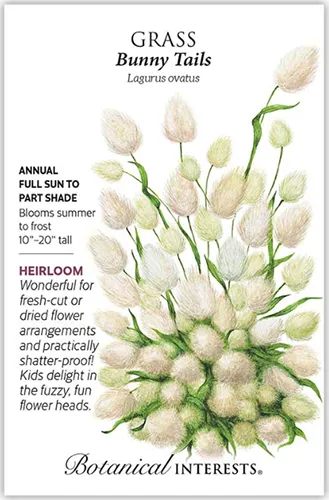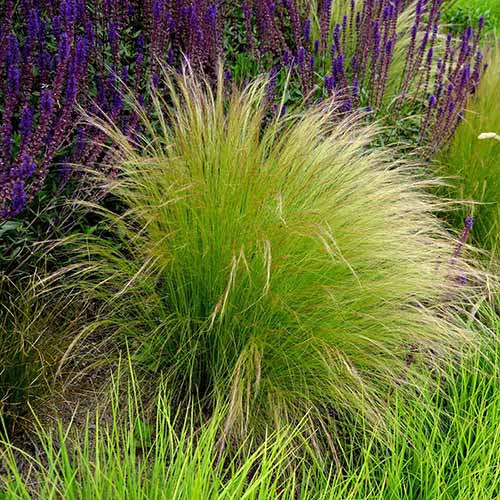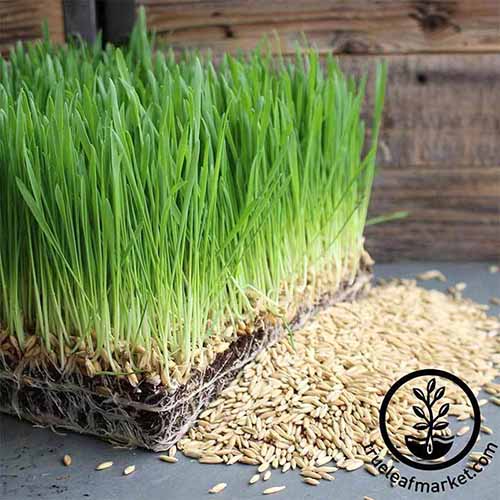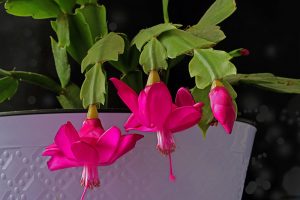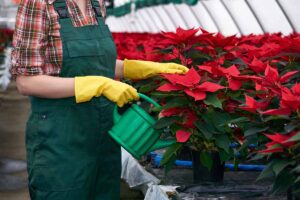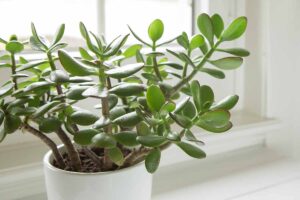Gorgeous grasses add immense appeal to our outdoor gardens and yards – but did you know they make beautiful houseplants as well?
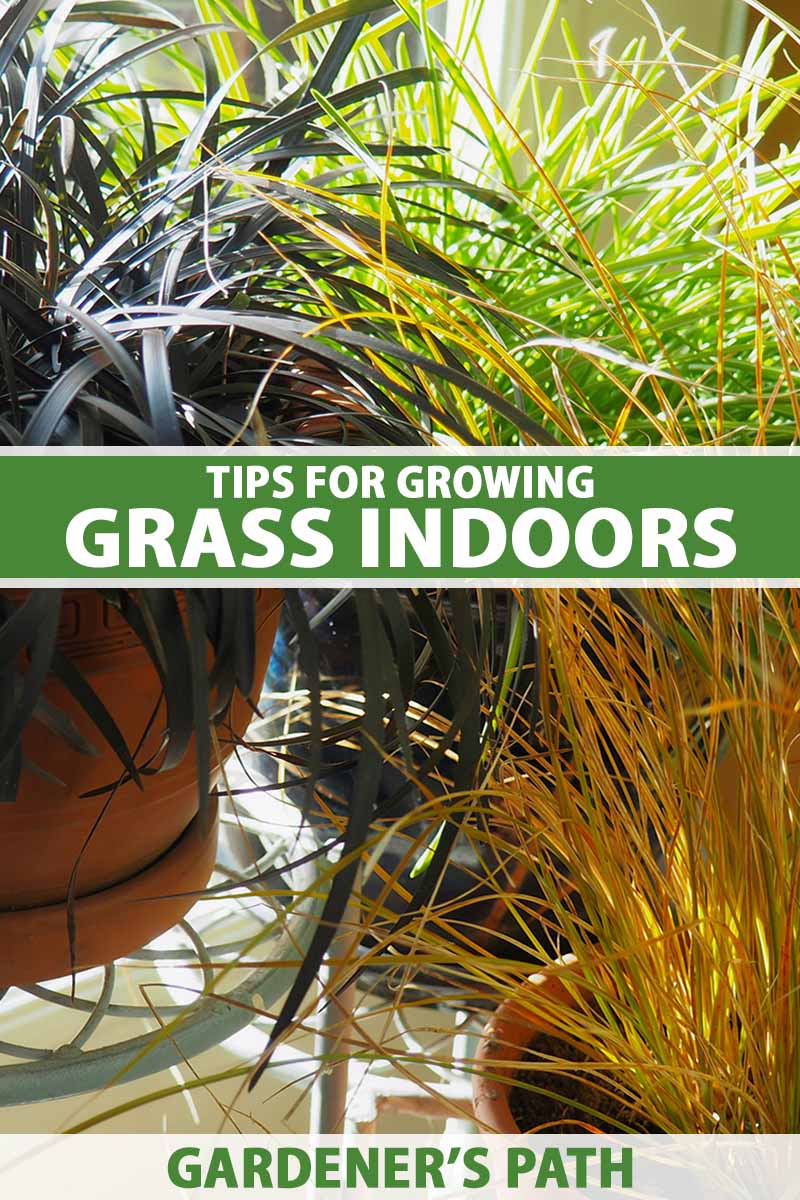
We link to vendors to help you find relevant products. If you buy from one of our links, we may earn a commission.
Wonderfully diverse, they come in a huge variety of colors, sizes, and shapes suitable for many interior settings.
You can create a cool green mini-meadow in a glass bowl with grains like wheat (Triticum aestivum) or add a fiery potted New Zealand sedge (Carex testacea) to your holiday decorations.
These ornamentals also add fantastic form and texture, from the zany corkscrew rush (Juncus effusus ‘Spiralis’) to the pretty Japanese sweet flag (Acorus gramineus).
And for the most part, they have a lovely, graceful quality that invokes a sense of calm.
Just like in the garden, when grown indoors, these durable plants are easy to cultivate and low maintenance.
Typically fast-growing, their longevity is determined by the type of grass grown, but all can thrive indoors for at least a short period.
So whether you’d like a patch of soothing green indoor “lawn” to bust the short days of winter or a long-term, showy ornamental grass to display year-round, join us now for the details on how to grow grass houseplants.
Here’s what we’re looking at:
What You’ll Learn
Best Varieties of Grass for Indoor Growth
A vast variety of grasses and similar plants will thrive as houseplants, from common grains and turf types to rushes and sedges – and they all do well in containers.
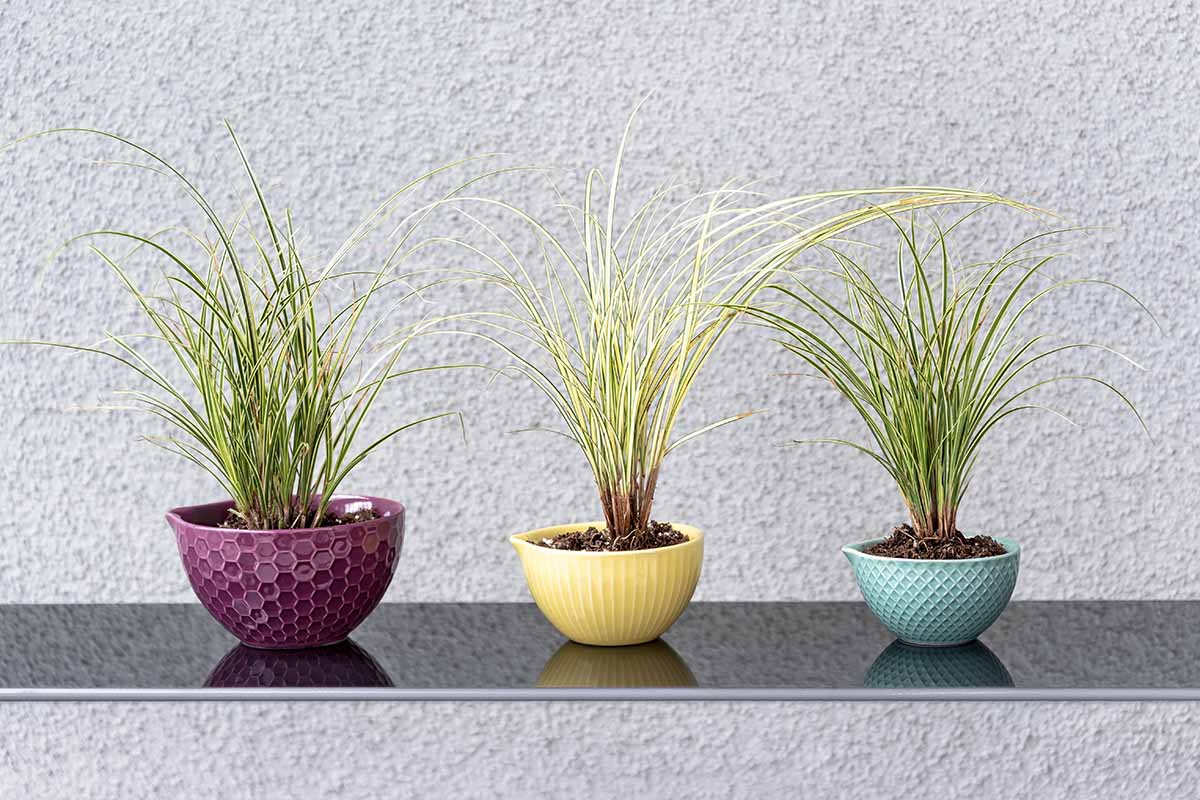
These exhibit a wide range of cultivation requirements, such as necessary light and moisture levels.
They have their own unique temperature preferences as well, which gives us an idea of their growth habits.
Most cool-season species like fescues (Festuca spp.) are perennial evergreens, and naturally retain their foliage year-round in ideal settings.
But many warm-season types such as fountain grass (Pennisetum spp.) go dormant in winter, with foliage that browns and dies back – and keeping these vibrant indoors for longer than a couple of months can be a frustrating challenge.
To help you get the most out of your indoor plantings, keep the following points in mind when making your selections:
Species and cultivars that prefer a partial shade setting are better suited for long-term growth indoors than full-sun lovers, due to the limitations of indoor lighting.
For a display of cool, lawn-like blades, turf varieties can be used, but they often give disappointing results.
Instead, use fast-growing and popular edibles for a lush potted lawn. Varieties such as annual ryegrass (Lolium multiflorum), wheat (Triticum aestivum), and cat grass mixes are all good choices.
Packets of seeds for pet consumption usually contain oats (Avena sativa), but they can also contain barley (Hordeum vulgare), rye (Secale cereale), and intermediate wheatgrass (Thinopyrum intermedium), which also make good “lawns” indoors.
For interesting optics, tall types – such as the elegantly upright New Zealand flax (Phormium spp.) – create interesting vertical pieces while mounding types fall in a lush cascade, like the charming fiber-optic sedge (Isolepis cernua).
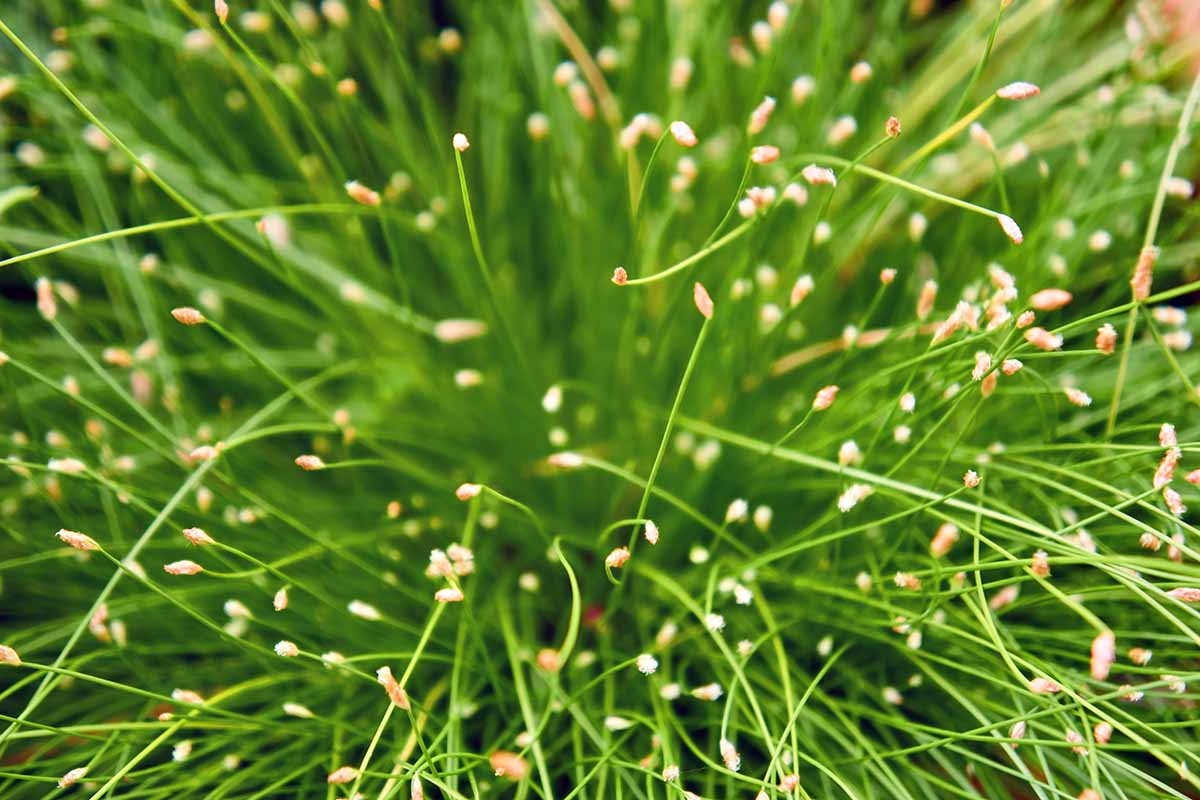
Or look for varieties that display colorful or variegated foliage like zebra miscanthus (Miscanthus sinensis ‘Zebrinus’), that have interesting seed heads like the spikey Gray’s sedge (Carex grayi), or feature unique growth habits such as the aforementioned corkscrew rush.
There are hundreds of species and cultivars to choose from, but here’s a sampling of options that make good houseplants, which can be grown from seed.
Blue Fescue
Perennial blue fescue (Festuca glauca) makes a beautiful choice for growing indoors. It features dense, spikey mounds of fine, steel-blue foliage growing up to 18 inches in height.
You can find F. glauca ‘Festina’ seeds available at True Leaf Market.
Bunny Tails
With charming, fluffy seed heads, fast-growing bunny tails (Lagurus ovatus) are attractive as houseplants and they may also be used in dried flower arrangements.
Bunny tails are annuals that grow up to 20 inches tall, with fast, reliable germination.
Seed packets can be purchased at Botanical Interests.
Hard Red Wheat
One of the best for lawn bowls (and smoothies!), hard red wheat (Triticum aestivum) is fast-growing and features thick blades with even growth.
Seed packets and bulk options are available at True Leaf Market.
Mexican Feathergrass
For a touch of airy elegance, upright Mexican feathergrass (Nassella tenuissima syn. Stipa tenuissima) is a clumping perennial with wispy and whimsical seed heads that dance in the lightest of breezes.
Plants grow up to 24 inches tall.
Packets of seeds in a variety of sizes can be found at Eden Brothers.
Oats
A good choice for decorative bowls, oat (Avena sativa) seeds have a high germination rate with fast, even growth. Oat grass is also delicious for the juicer and pets love nibbling the blades.
You can find bags of oat seeds in varying sizes at True Leaf Market.
Whatever variety you choose, you’ll need something for your plants or seeds to grow in.
Container Selection
Containers can be made of any materials, such as ceramic, metal, resin, or terra cotta, and in any size suitable for your interior and species or cultivar selection.
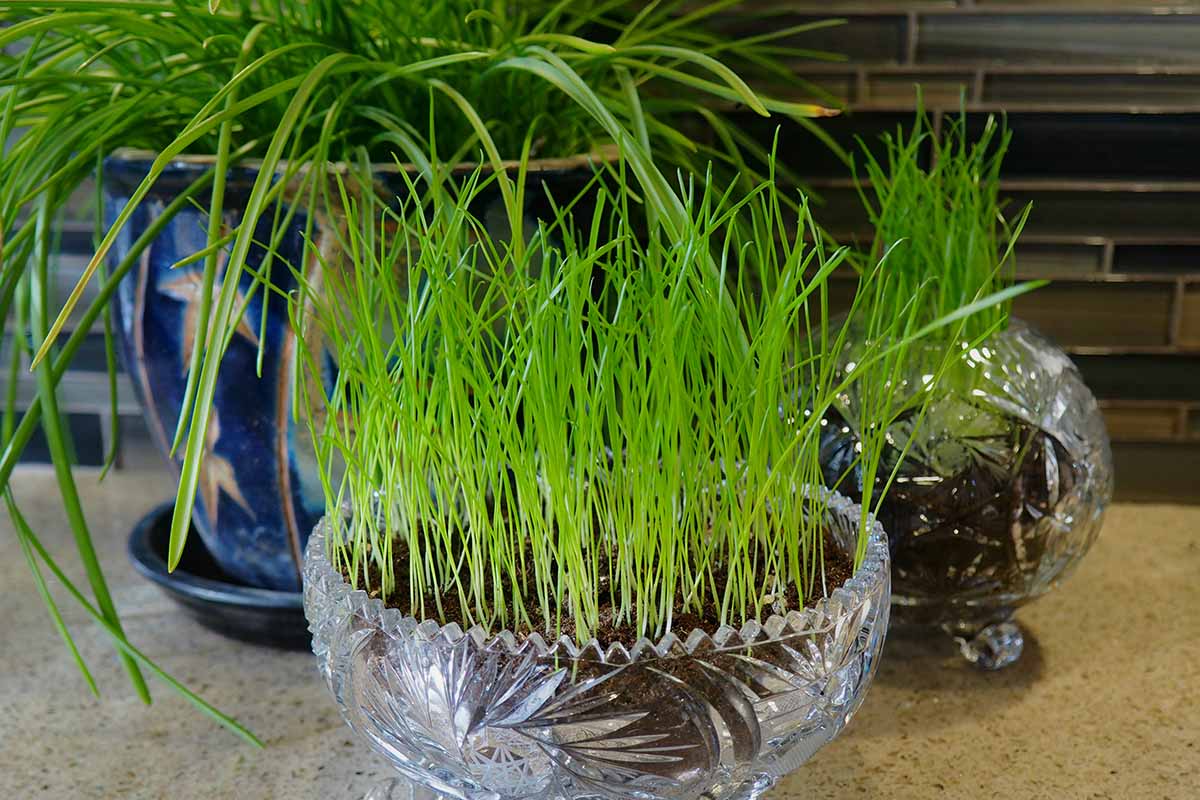
If you’re growing “lawn” type foliage, it’s best to select shallow, wide containers, and for the taller, ornamental grasses, narrow, deep pots work well.
Take into consideration the expected mature height and width of the plants when choosing your pots and planters.
Ensure each container has adequate drainage holes.
Before planting, I like to add a two-inch layer of drainage material such as broken pottery or pebbles to the pot’s bottom to improve drainage. Other gardeners will advise against this, so do what you find works best.
Use a catchment saucer to keep things tidy.
Fast-growing and short-lived varieties, such as rye or wheat, can also be displayed in decorative crystal or glass bowls.
But with no drainage holes, care needs to be taken to avoid overwatering – use a light touch to avoid problems like root rot from soggy soil.
Fill containers with an enriched and well-draining houseplant potting soil.
Locate in a site with lighting best suited to your plant’s needs, with a minimum of four hours of sunlight each day.
Sowing Seeds
For indoor display, many varieties can be sown from seed.
Ornamental grass seeds can take longer to germinate than lawn and pet grass types – check your seed packet for planting directions.
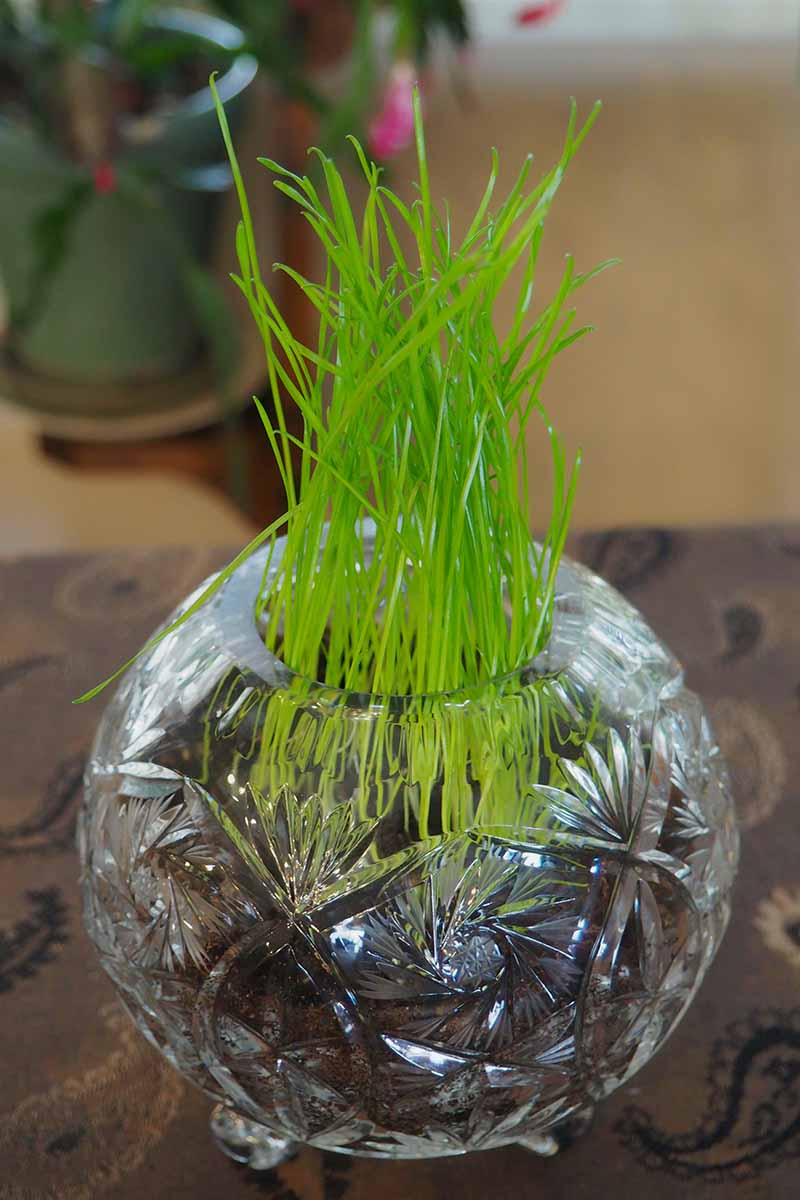
Common seed-grown varieties include annuals like barley, oats, rye, and wheat, as well as ornamentals such as bunny tails (Lagurus ovatus) and quaking grass (Briza maxima).
Seed-sown perennials include varieties of blue fescue (Festuca glauca), many Carex species, jade princess millet (Pennisetum glaucum ‘Jade Princess’), dwarf pampas (Cortaderia selloana ‘Pumila’), pink muhly (Muhlenbergia capillaris), and ruby grass (Melinis nerviglumis).
However, many varieties are sterile hybrids and can’t be grown from seed, such as blue hair (Koeleria glauca) and purple fountain grass (P. x advena ‘Rubrum’).
For sterile varieties, pick up starter plants at your favorite garden center or reputable online seller instead.
Transplanting details for nursery starts are available in our guide to growing ornamental grass in containers.
To propagate seed, fill containers with a moistened, well-draining potting soil mix and sprinkle the seeds over the soil surface. Sow seeds thickly to produce a sumptuous mat of foliage.
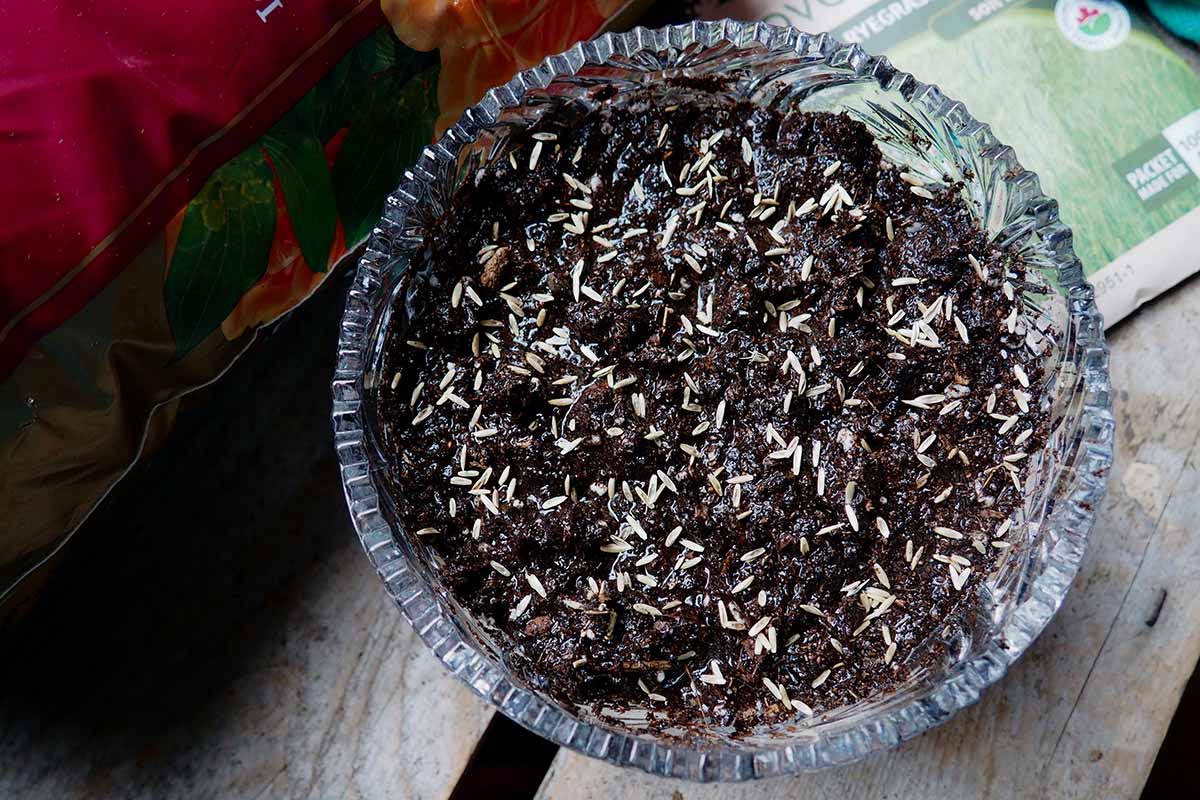
Cover seeds with half an inch of soil and gently firm in place – or follow the directions on the seed packet for particulars.
Keep the soil lightly moist, but not wet. Seeds typically sprout in a week or two.
Now, let’s move on to some general steps for care and maintenance.
Care and Maintenance Tips
In the garden or indoors, members of the Poaceae family of grasses and their close relatives are low maintenance and non-fussy.

Water and fertilizers should be applied according to each species or cultivar’s needs.
If you’re unsure of the details here, a broad rule of thumb is to water when the soil surface is dry. And fertilize according to the instructions on your favorite indoor plant food, usually once every one to two months.
Indoor foliage plant foods are a good choice for grasses as their NPK ratio (nitrogen, phosphorus, and potassium) is typically higher in nitrogen, which promotes lush foliage.
Empty catchment saucers of water to prevent soggy soil, and in dry winter environments, a light weekly misting can be beneficial.
Lawn-like cultivars can be left unclipped for a soft, meadowy look, or trimmed with clean, sharp scissors for a tightly cropped appearance. Harvesting edible types periodically also doubles as a form of maintenance pruning, with delicious results!
Most ornamental varieties, except for pampas (Cortaderia selloana), are pet safe.
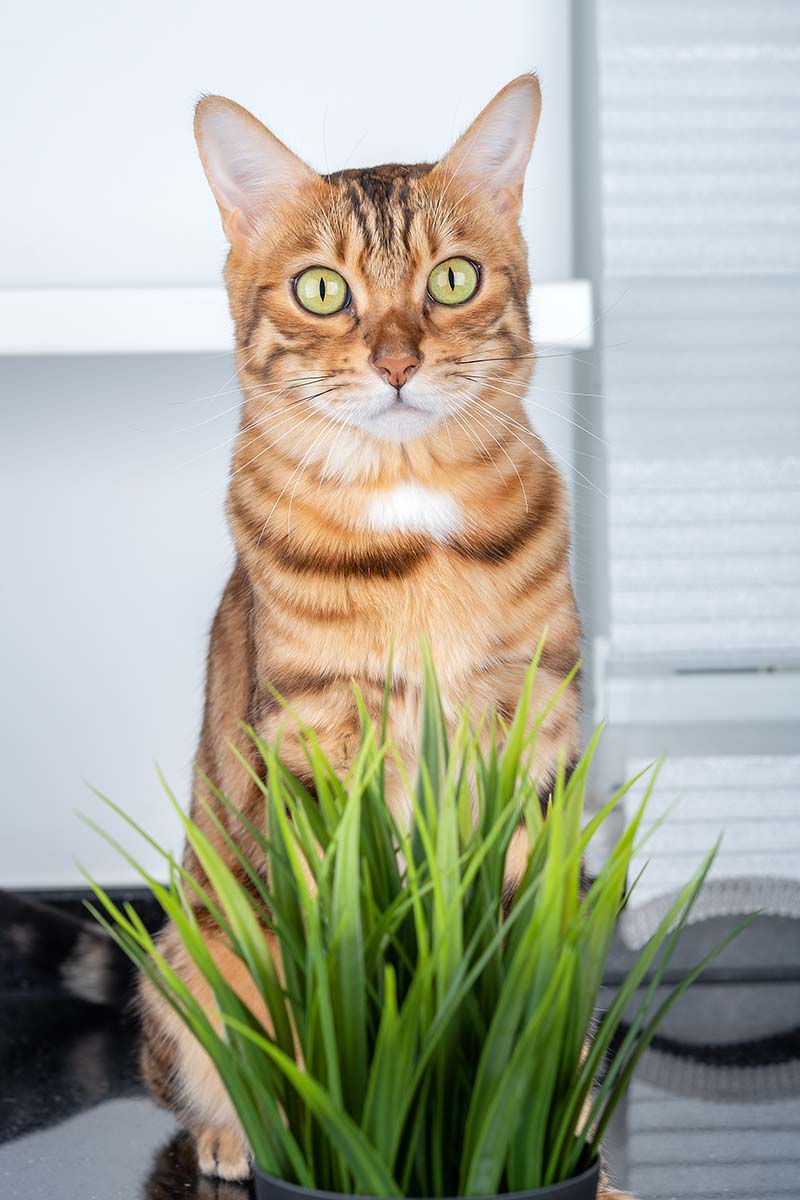
If you do plant any of the grain varieties like barley, oats, or rye, be sure to grow an extra bowl for Felix, Fido, and Fluffy – your furry family members will appreciate having their own fiber-rich greens to nibble on!
Keep short-season grains trimmed to six inches to prevent seed formation.
For extra visual interest, leave showy seed heads in place to ripen on the stem. After they cycle out and diminish in vigor, remove stems at the base.
Remove dead or damaged leaves as they appear, cutting stalks close to the base.
Prune perennial evergreens lightly in late winter. Use clean, sharp scissors to reshape or resize plants as needed while conforming to their natural shape.
Perennials can become root bound over time and may need to be divided and repotted every four years or so.
Most of the fast-growing grain varieties only last about two months indoors. Once leaves start to yellow and energy flags, empty containers and dispose of the contents in the compost or yard waste bin.
A Little Patch of Green
Whether you’re looking for a little patch of green or an optically interesting ornamental, there’s a suitable grass or two for your interior.
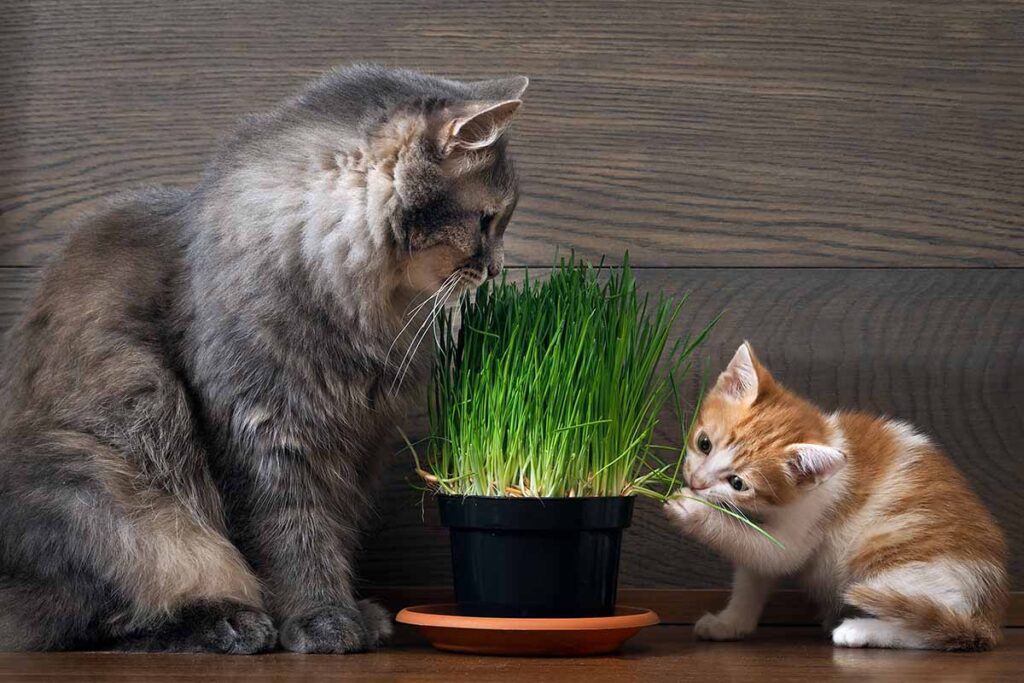
Pot up seeds and starter plants in containers, then provide appropriate lighting. Water and fertilize regularly for beautiful houseplants.
What types of grass do you folks grow indoors? Let us know in the comments section below.
And for more houseplant know-how, be sure to check out these articles next:
